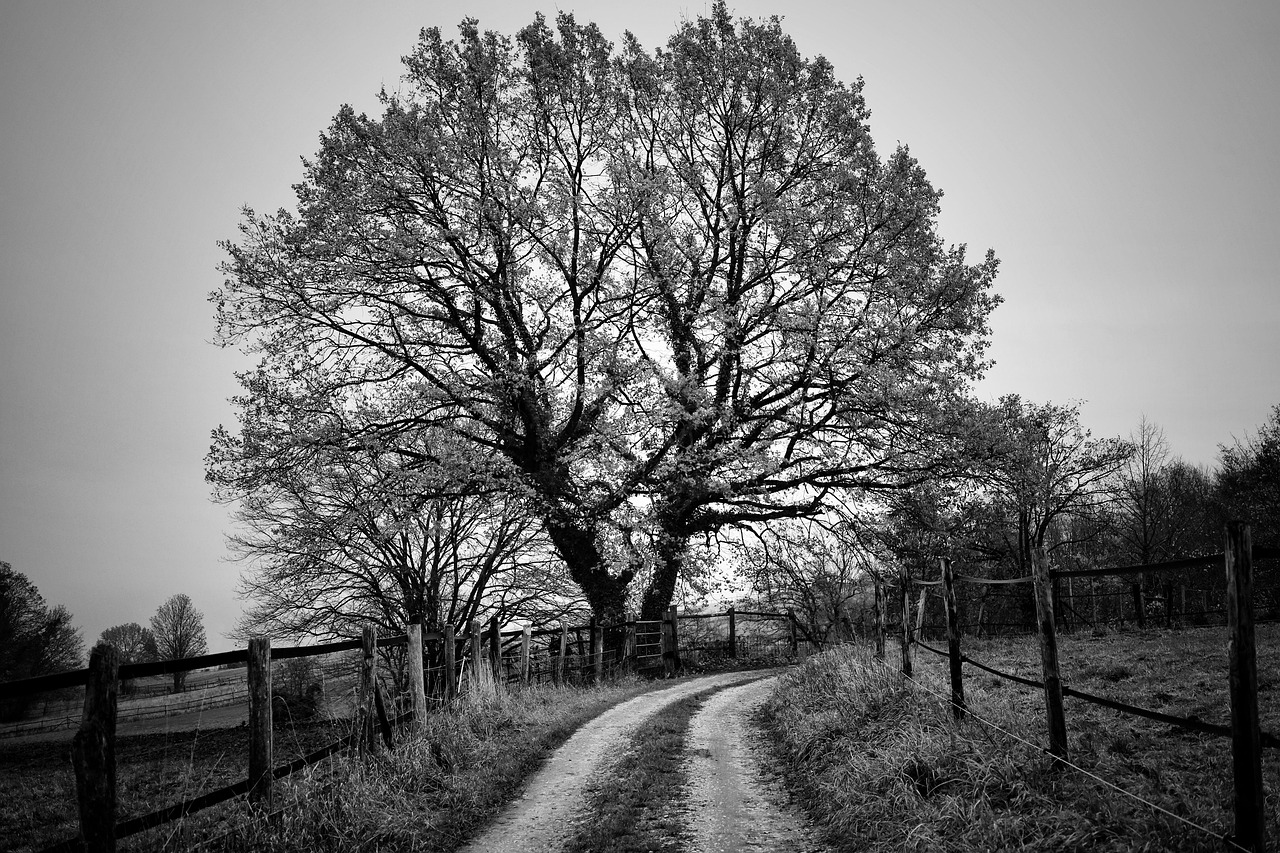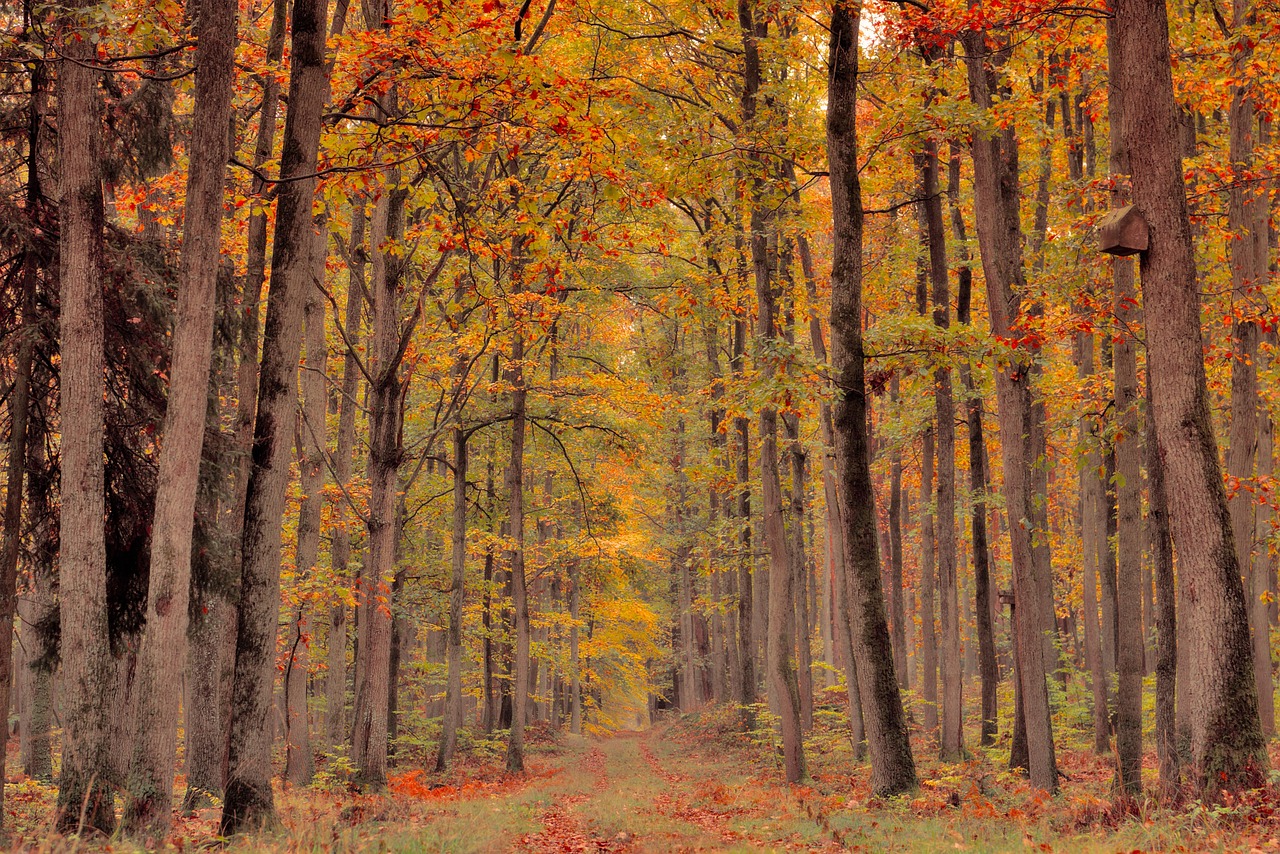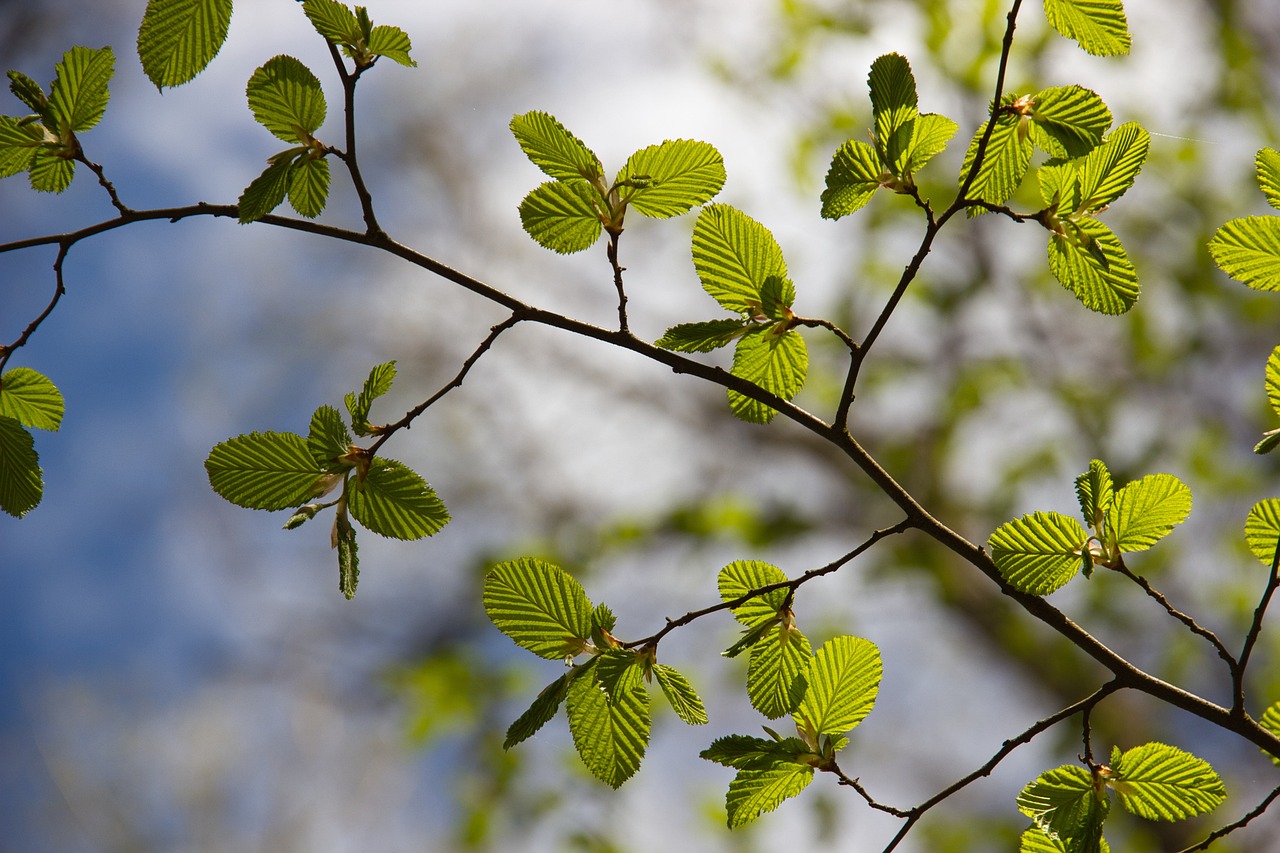Deciduous trees exhibit seasonal growth patterns, primarily influenced by temperature and daylight. Their growth rate accelerates during spring and summer when conditions are optimal, while leaf shedding occurs in autumn as trees prepare for winter dormancy.
Deciduous trees are a vital part of many ecosystems, providing shade, habitat, and aesthetic beauty. These trees are characterized by their seasonal leaf shedding. Unlike evergreens, which retain their foliage year-round, deciduous species drop their leaves annually. This process is not merely a way to conserve water and energy during colder months; it is also a significant aspect of their growth cycle.

Understanding the growth rate seasonality and leaf shedding of deciduous trees is essential for various reasons. For gardeners and landscapers, knowing when these trees grow and shed leaves can aid in planning planting and maintenance schedules. For ecologists, these patterns provide insight into ecosystem health and climate change effects. The behavior of deciduous trees also plays a crucial role in the carbon cycle, influencing how much carbon dioxide is absorbed from the atmosphere.
Growth Rate of Deciduous Trees
The growth rate of deciduous trees varies by species, environmental conditions, and age. Generally, these trees experience rapid growth during the spring and summer months. Warm temperatures and extended daylight hours trigger biological processes that lead to new leaf and branch development. The rate of growth can be measured in several ways, including height increase, trunk diameter, and leaf production.
During the growing season, deciduous trees rely on photosynthesis to convert sunlight into energy. This energy fuels their growth, allowing them to produce leaves that capture sunlight effectively. The quality of soil, availability of water, and overall weather conditions significantly influence this growth process.

In ideal conditions, many deciduous tree species can grow several feet in height each year. However, this growth rate can decline as the tree matures. Younger trees tend to grow faster than older ones due to their higher metabolic rates. Below is a table showing the average growth rates of some common deciduous tree species:
| Tree Species | Average Height Growth (Feet per Year) | Average Diameter Growth (Inches per Year) |
|---|---|---|
| Red Maple | 1-3 | 0.5-1 |
| Oak | 1-2 | 0.5-2 |
| Birch | 1-3 | 0.5-1.5 |
| Sweetgum | 2-3 | 0.5-1 |
The observed growth rates can vary due to factors such as soil quality, water availability, and competition with other plants. Trees growing in rich, moist soils tend to thrive more than those in poor or dry soils. Additionally, urban environments can present unique challenges for tree growth, including limited space and pollution.
Seasonal Leaf Shedding
Leaf shedding in deciduous trees occurs as part of their adaptation to seasonal changes. As autumn approaches, cooler temperatures and shorter days signal trees to prepare for winter. During this time, trees begin a process called abscission, where they form a protective layer at the base of each leaf stem. This layer effectively “cuts off” the leaf from the tree.

The reasons for this behavior are primarily survival-based. By shedding leaves, deciduous trees reduce water loss during the winter months when water may be less accessible due to freezing temperatures. Additionally, without leaves, the risk of damage from snow and ice accumulation on branches decreases.
The vibrant colors seen in autumn foliage are due to changes in leaf pigments as chlorophyll breaks down. This process reveals other pigments such as carotenoids and anthocyanins, which contribute to the beautiful reds, oranges, and yellows that many people associate with fall.
Factors Influencing Growth Rates
The growth rates of deciduous trees are influenced by various factors, including environmental conditions, soil quality, and tree species. Each of these factors plays a significant role in determining how well a tree will grow during its active seasons.
Environmental Conditions
Environmental conditions such as temperature, sunlight, and moisture levels are critical for the growth of deciduous trees. These trees thrive in warm temperatures and require sufficient sunlight to perform photosynthesis effectively.

- Temperature: Optimal temperatures for growth typically range between 65°F and 85°F. Extremes in temperature can hinder growth.
- Sunlight: Deciduous trees require full sun exposure for at least six hours a day to maximize photosynthesis.
- Moisture: Adequate water supply is essential. Trees may struggle in extremely dry conditions or waterlogged soils.
Soil Quality
The quality of the soil directly impacts how well trees can absorb nutrients and water. Soil composition, pH levels, and organic matter all contribute to tree health.
Key aspects of soil quality include:
- Nutrient Content: Soils rich in nitrogen, phosphorus, and potassium support robust growth.
- Soil pH: Most deciduous trees prefer slightly acidic to neutral pH levels (around 6.0 to 7.0).
- Drainage: Well-drained soils prevent root rot and promote healthy root development.
Tree Species Variability
Different species of deciduous trees exhibit varying growth rates and tolerances to environmental conditions. For example, fast-growing species such as the Silver Maple can reach heights of 50 to 70 feet quickly, while slower-growing species like the Oaks may take decades to reach their full potential.
The following table provides a comparison of growth rates among several popular deciduous tree species:
| Tree Species | Growth Rate (Feet per Year) | Mature Height (Feet) | Lifespan (Years) |
|---|---|---|---|
| Silver Maple | 3-5 | 50-70 | 30-50 |
| Sugar Maple | 1-2 | 60-75 | 100-300 |
| Red Oak | 2-3 | 60-80 | 200-300 |
| Eastern Redbud | 1-2 | 20-30 | 30-50 |
The Role of Climate Change on Deciduous Trees
Climate change is increasingly impacting the growth patterns and health of deciduous trees. Changes in temperature, precipitation patterns, and the frequency of extreme weather events can disrupt their natural cycles.
Temperature Changes
As global temperatures rise, deciduous trees may experience longer growing seasons. This change can lead to earlier leaf bud break in spring and delayed leaf drop in autumn. However, excessively high temperatures may stress trees and reduce overall growth.
Altered Precipitation Patterns
Shifts in rainfall can affect water availability for deciduous trees. Some regions may experience droughts, while others may face increased flooding. Both extremes can harm tree health:
- Drought Stress: Insufficient water can lead to wilting, stunted growth, and increased susceptibility to pests.
- Flooding: Excessive water can suffocate roots and promote fungal diseases.
Pest and Disease Dynamics
A changing climate can also influence pest populations. Warmer temperatures may allow pests to thrive year-round, increasing the risk of infestations that can weaken or kill trees. Additionally, diseases that were once limited to specific regions may spread to new areas as climate conditions become more favorable.
This shifting landscape poses a challenge for forest management and conservation efforts, requiring adaptive strategies to ensure the health and sustainability of deciduous tree populations.
Ecological Importance of Deciduous Trees
Deciduous trees play a crucial role in their ecosystems. They provide numerous benefits that extend beyond their immediate environment and contribute to the health of the planet. Understanding these ecological functions is essential for promoting biodiversity and forest conservation.
Habitat for Wildlife
Deciduous forests offer a rich habitat for various wildlife species. The diverse structure of these forests, characterized by layers of vegetation, creates niches for different animals and plants.
- Birds: Many bird species rely on deciduous trees for nesting, foraging, and shelter. The seasonal changes in foliage provide protection and food sources throughout the year.
- Mammals: Species such as deer, squirrels, and raccoons find food and cover in deciduous forests. The fallen leaves and fruits serve as a source of nutrition.
- Insects: Deciduous trees support numerous insects, which are vital for pollination and as a food source for other animals.
Carbon Sequestration
One of the most critical roles of deciduous trees is carbon sequestration. They absorb carbon dioxide during photosynthesis, helping to mitigate climate change:
- Photosynthesis: During the growing season, deciduous trees capture carbon dioxide and convert it into oxygen, contributing to cleaner air.
- Carbon Storage: As trees grow, they store carbon in their wood, leaves, and roots. This process helps reduce atmospheric CO2 levels.
Soil Health Improvement
The presence of deciduous trees contributes significantly to soil health. Their root systems help prevent soil erosion and enhance nutrient cycling:
- Erosion Control: The extensive root systems stabilize the soil, reducing runoff and preventing erosion.
- Nutrient Cycling: Deciduous trees contribute organic matter to the soil through leaf litter, enriching it with nutrients that support other plant life.
- Microbial Activity: The decomposition of leaves promotes microbial activity in the soil, which is essential for nutrient availability.
Cultural and Economic Value
Beyond their ecological importance, deciduous trees hold cultural and economic value for human societies. They provide aesthetic beauty, recreational opportunities, and vital resources.
Aesthetic and Recreational Benefits
Deciduous trees enhance landscapes with their seasonal foliage changes, attracting tourists and nature enthusiasts. Parks and forests filled with these trees offer recreational opportunities such as hiking, birdwatching, and photography.
Timber and Non-Timber Products
Many deciduous tree species are valuable resources for timber and non-timber products:
- Timber: Hardwoods from deciduous trees, such as oak and maple, are sought after for furniture, flooring, and construction materials due to their durability and beauty.
- Non-Timber Products: Other products include fruits (like apples and cherries), nuts (such as acorns), and medicinal plants derived from various deciduous tree species.
Management Practices for Sustainable Growth
Sustainable management practices are essential to ensure the health of deciduous trees and their ecosystems. These practices help mitigate the effects of climate change and promote biodiversity.
Reforestation and Afforestation
Reforestation involves planting trees in deforested areas, while afforestation refers to establishing forests in previously non-forested areas. Both practices are vital for restoring ecosystems:
- Restoration of Habitat: Planting deciduous trees helps restore habitats for wildlife and enhances biodiversity.
- Carbon Sequestration: New forests can capture and store significant amounts of carbon dioxide from the atmosphere.
Pest Management Strategies
Effective pest management is critical to maintaining healthy deciduous trees. Integrated pest management (IPM) combines various techniques to control pests while minimizing harm to the environment:
- Cultural Practices: Crop rotation, diversity in planting, and maintaining healthy soil can help prevent pest outbreaks.
- Biological Control: Using natural predators or parasites to manage pest populations can reduce reliance on chemical pesticides.
- Chemical Controls: When necessary, targeted use of pesticides can manage severe infestations while minimizing impact on non-target organisms.
Sustainable practices not only benefit deciduous trees but also support overall ecosystem health and resilience against changing environmental conditions. By recognizing their importance and implementing responsible management strategies, we can ensure that these trees continue to thrive for future generations.
Future Research Directions
The study of deciduous trees continues to evolve, revealing new insights into their growth rates, seasonality, and leaf shedding. Future research can focus on several key areas to enhance our understanding of these vital organisms.
Impact of Climate Change
As climate change progresses, ongoing research is essential to understand how rising temperatures and shifting precipitation patterns affect deciduous trees. Studies may explore:
- Phenology Changes: Observing how the timing of leaf bud break and leaf drop alters in response to changing climates.
- Adaptation Mechanisms: Investigating how different species adapt to new environmental stresses and their potential genetic adaptations.
- Forest Ecosystem Responses: Examining how changes in deciduous tree populations influence entire forest ecosystems and their associated wildlife.
Technological Advances in Monitoring
Technological advancements provide new tools for studying tree growth and health. Remote sensing, drones, and data analytics can be used to:
- Health Monitoring: Detecting early signs of stress or disease in trees through aerial imagery.
- Growth Tracking: Using satellite data to track growth patterns over time across large areas.
- Soil Analysis: Implementing technology to assess soil health and its relationship with tree growth rates.
Biodiversity Conservation
Research into the biodiversity of deciduous forests is crucial for conservation efforts. This includes:
- Species Interaction Studies: Understanding how different tree species interact with each other and with understory plants.
- Habitat Restoration: Investigating the best practices for restoring deciduous forests that have been degraded by human activity.
- Community Engagement: Researching ways to involve local communities in the conservation of deciduous forests and their resources.
Final Thoughts
Deciduous trees are remarkable organisms that play a critical role in our environment. Their seasonal growth patterns and leaf shedding not only contribute to their survival but also support diverse ecosystems. Understanding the factors that influence their growth rates is essential for effective management and conservation efforts.
The ecological benefits provided by deciduous trees—such as habitat for wildlife, carbon sequestration, and soil health improvement—underscore their importance in combating climate change and promoting biodiversity. As we face increasing environmental challenges, sustainable practices become imperative for ensuring the longevity of these vital trees.
The future of deciduous trees depends on our commitment to research, conservation, and responsible management. By recognizing their value and implementing strategies that promote their health, we can ensure that deciduous trees continue to thrive, enriching our landscapes and ecosystems for generations to come. As stewards of the environment, it is our responsibility to protect these trees and the myriad benefits they provide.
In conclusion, as we deepen our understanding of the growth rate seasonality and leaf shedding of deciduous trees, we unlock the potential for more sustainable interactions with our natural world. Investing in the health of our forests is not only crucial for the trees themselves but also for the countless species—human and non-human—that rely on them.
